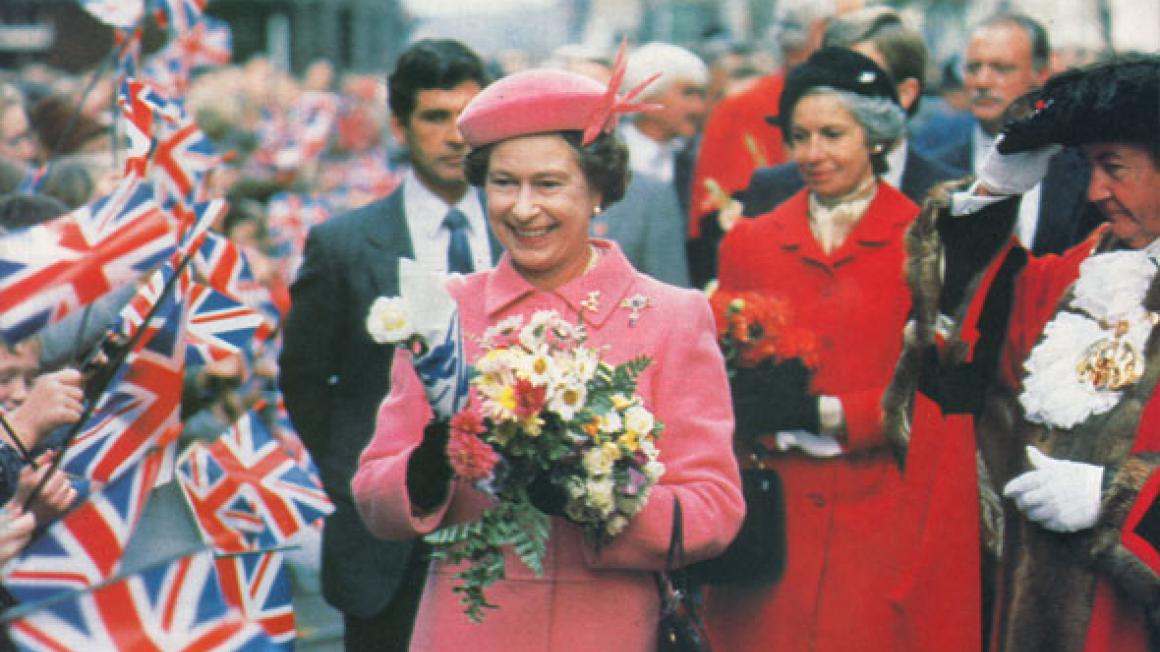Now that's a celebration! (or 200 years of Royal Jubilees)
Royal jubilees are rare and wonderful occurrences, and the recollection of the celebrations lives long in the nation’s collective memory. Only four British monarchs – George III, Victoria, George V and Elizabeth II – have enjoyed national jubilee celebrations, but all have been celebrated with gusto.
THE NATIONAL JUBILEE
It is slightly ironic that the first monarch to bask in the nation’s patriotic affection after a 50-year reign was George III, a king who is popularly remembered for losing the American colonies and going mad. But ‘Farmer’ George was an earnest, hard-working king and, by 1809, the country was ready for a party.
The war with France had been going on for 20 years, and at the time of the King’s jubilee, in accordance with Biblical observance, military deserters were pardoned, debtors were released and pardons were extended to prisoners of war – unless they were French. The National Jubilee was celebrated on 25 October 1809, at the beginning of the King’s 50th anniversary, but the celebrations took place without central organisation or coordination in a remarkable display of patriotism and, to insert a 21st-century word, localism. The whole nation celebrated, thanks to the paternalistic generosity of landowners, industrialists and the better-off, who funded teas, ox roasts, ‘illuminations’ and loyal toasts up and down the realm. It was all recorded at length in a book that was published the following year, Account Of The Celebration Of The Jubilee: ‘Collected and published by A Lady (the wife of a naval officer)’, who noted that, ‘the whole of the British Dominions presented… an animating spectacle of an entire nation occupied in praise and thanksgiving’.
On 25 October 1809, George III set out for a service of thanksgiving in St George’s Chapel at Windsor, before inspecting a troop of soldiers, but his frail health meant that he played little part in the ensuing celebrations. After attending an ox roast in Bachelors’ Acre, Windsor, supplied by officers of the Horse Guards regiments, Queen Charlotte, attended by some of her children, hosted a magnificent ‘fete’ at Frogmore. The Royal Family remained until the early hours of the morning, no doubt entranced by the extravagant displays, which included the gure of Britannia being pulled to and fro in a chariot drawn by sea horses and illuminated by reworks – apparently ‘a more striking spectacle was never witnessed’.
City buildings were illuminated and commemorative statues were unveiled in many towns, where the jubilee was seen as a force for good and a chance to help the less fortunate. Although many people may have woken up the next day with hazy memories after all that loyal toasting, the people of one Oxfordshire village ensured that no one forgot the National Jubilee by deciding to name every child born during the jubilee year, Jubilee George or Jubilee Charlotte.
THE JUBILEES OF QUEEN VICTORIA
Whereas George III’s jubilee seems to have been just one day of celebration, the Golden Jubilee of his granddaughter gave the people of Britain a chance to reflect on the great changes that had occurred during the Queen’s reign, and she became the focus of the nation’s pride and gratitude. In 1886, Queen Victoria contemplated her approaching Golden Jubilee without enthusiasm. However, a New Year’s gift of a Queen Victoria-shaped inkstand from the Prince of Wales seemed to amuse her, and from then on she embraced the event wholeheartedly.

The service of thanksgiving was held in Westminster Abbey on 21 June 1887, a day of glorious sunshine, which was instantly upheld as ‘Queen’s weather’ by the press. The Queen had been quite specific in her requests regarding the length of the ceremony, asking that it should be reasonably short and that, ‘there should be no discourse or sermon: because at that time of year the weather is likely to be hot; and in hot weather her strength fails her almost entirely’. The Golden Jubilee was marked not only by fetes, parties, church services and parades, but by the more tangible and longer-lasting construction of hospitals, libraries, water fountains, public baths and law courts across the Empire, many of which still stand.
In Sind province in India, the jubilee was commemorated by the opening of an unusual, but highly practical, establishment, the Queen Victoria Jubilee Burial and Burning Ground.
Ten years later, in 1897, it seemed unlikely that another jubilee could eclipse what had been called the ‘most splendid spectacle of the century’, but the Diamond Jubilee truly was an imperial celebration. Queen Victoria was 78 and, mindful of her own mortality, announced that festivities should not commence until the actual anniversary of her accession, 20 June 1897.
The organisers made a real effort to extend the celebrations to every stratum of Victorian society and to take the Queen directly to her people. The Royal procession usually went through the West End and the City, but this time the route was extended across London Bridge and through the poorer boroughs of Bermondsey, Southwark and Kennington.
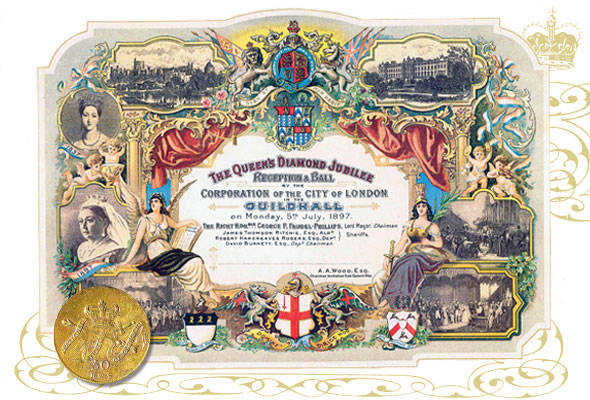
On 22 June 1897 – once again blessed by the blue skies of ‘Queen’s weather’ – Queen Victoria set out at the head of the magnficent procession, leading most of the crowned heads of Europe and many other princes, maharajahs and chiefs from around the world. She paused to press an electric button that sent a Jubilee message of thanks flashing across the telegraph lines of the Empire: ‘From my heart I thank my beloved people. May God bless them!’ London was bedecked in bunting, flags and patriotic banners. For weeks, the newspapers had been full of advertisements for rooms with views along the royal route, and stands had been erected to accommodate thousands of spectators.
The Queen was overwhelmed: ‘No one ever, I believe, has met with such an ovation as was given to me, passing through those six miles of streets… The crowds were quite indescribable and their enthusiasm truly marvellous and deeply touching.’
THE SILVER JUBILEE OF GEORGE V
Some 38 years later, King George V wrote rather poignantly, ‘I remember so well both Queen Victoria’s Jubilees and can’t yet realise that I am having one now.’ His Silver Jubilee occurred in very different times from those of his grandmother. Unlike the heady days of imperial glory in 1897, by 1935, Britain was a country still scarred by the Great War and suffering from a severe economic depression.
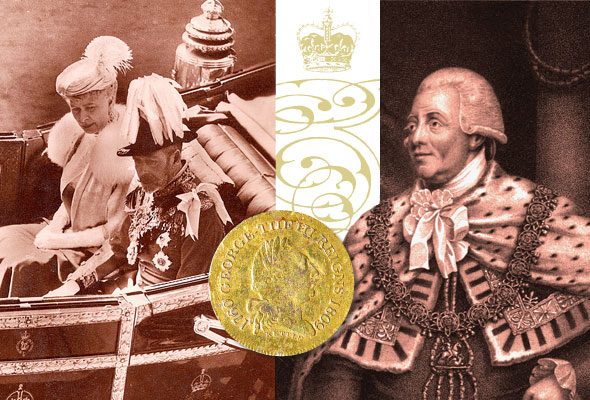
There was some doubt, not least from the King himself, about whether anyone would want to celebrate. In the event, he was dumbfounded by the rousing reception he received on 6 May, when he left Buckingham Palace to drive to St Paul’s Cathedral for the service of thanksgiving.
In the weeks afterwards, he and Queen Mary, occasionally accompanied by their granddaughters Princesses Elizabeth and Margaret Rose, visited many deprived areas of London. Here they were greeted by cheering crowds and patriotic banners, at least one of which read ‘The East End – Lousy but Loyal’. The King was astonished, ‘I’d no idea they felt like that about me,’ he said, ‘I am beginning to think they must really like me for myself.’
ELIZABETH II’S JUBILEES
A common thread that runs through Britain’s jubilee celebrations is the genuine surprise and delight felt by our monarchs when faced with millions of cheering people. George V’s sentiment was echoed by his granddaughter in 1977, who repeatedly said, ‘I am simply amazed. I had no idea,’ when she was greeted by untold numbers of high-spirited subjects around Britain and the Commonwealth in 1977.
But in 1977, as in 1935, it seemed uncertain whether anyone would really want to join in, as the nation’s youth embraced the safety pins and ripped jeans of the punk era, and their parents struggled with the energy crisis, inflation and strikes. The Home Office issued simple, if austere, advice for planning celebrations: ‘You must not bore the public. You must not kill the Queen.’
As the Queen and Prince Philip visited the warmer parts of the Commonwealth on their Silver Jubilee tour in the spring of 1977, they were met with unalloyed patriotic joy.
Back home, ‘Jubilee fever’ remained lukewarm but, by 7 June, the day of the official celebration, a million people turned out to line the route to watch the Queen and the Royal Family drive to St Paul’s for the traditional service of thanksgiving. Many people remembered the coronation and regarded the jubilee as a chance to recapture the fun of the street parties and fetes of 1953.
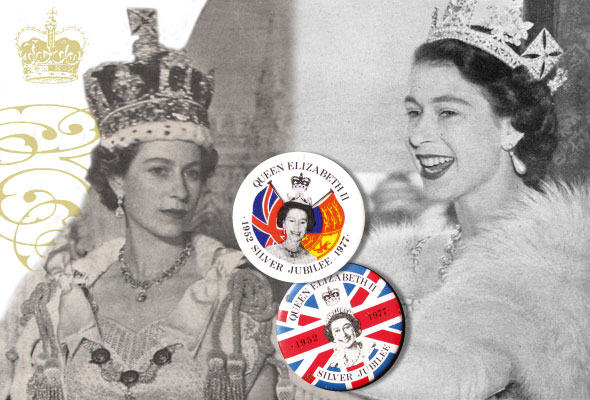
It was all a great success and 25 years later, the mood – and the scale of the celebrations – for the Golden Jubilee changed again. In 2002, the Royal Family stepped down from the balcony and joined the crowds in The Mall for the musical festivities. The Queen opened up the gardens of Buckingham Palace for a concert, although it is rumoured that she was not the biggest fan of the ‘Party at the Palace’, when the building was lit up with fireworks and lasers, which projected the Royal coat of arms on to the building’s façade.
Just as her grandfather had dispatched his sons to jubilee ceremonies around Britain, the Royal Family represented the Queen at celebrations in Britain and throughout the Commonwealth during the Golden Jubilee year.
No one now doubts the nation’s enthusiasm for a right royal knees-up, but it is interesting that today’s festivities have their roots in the first national jubilee. The ox roasts and plentiful loyal toasts of 1809 have become street parties or the ‘Big Lunch’; the Royal Family naturally provides a focus for a patriotic service of national thanksgiving; and the goodwill and desire to make a tangible memorial of the event is put to valuable charitable use.
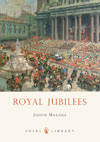
And everyone remembers the day. As a teenager in the 1970s, my jaw dropped when my great-grandmother told me she had watched the Diamond Jubilee procession in 1897 – and, 80 years later, she remembered the details.
So be in no doubt, whatever you decide to do this June bank holiday, you will be taking part in a moment of British history. God Save the Queen!
Historian and writer Judith Millidge is the author of Royal Jubilees, published by Shire Books, priced £6.99.


